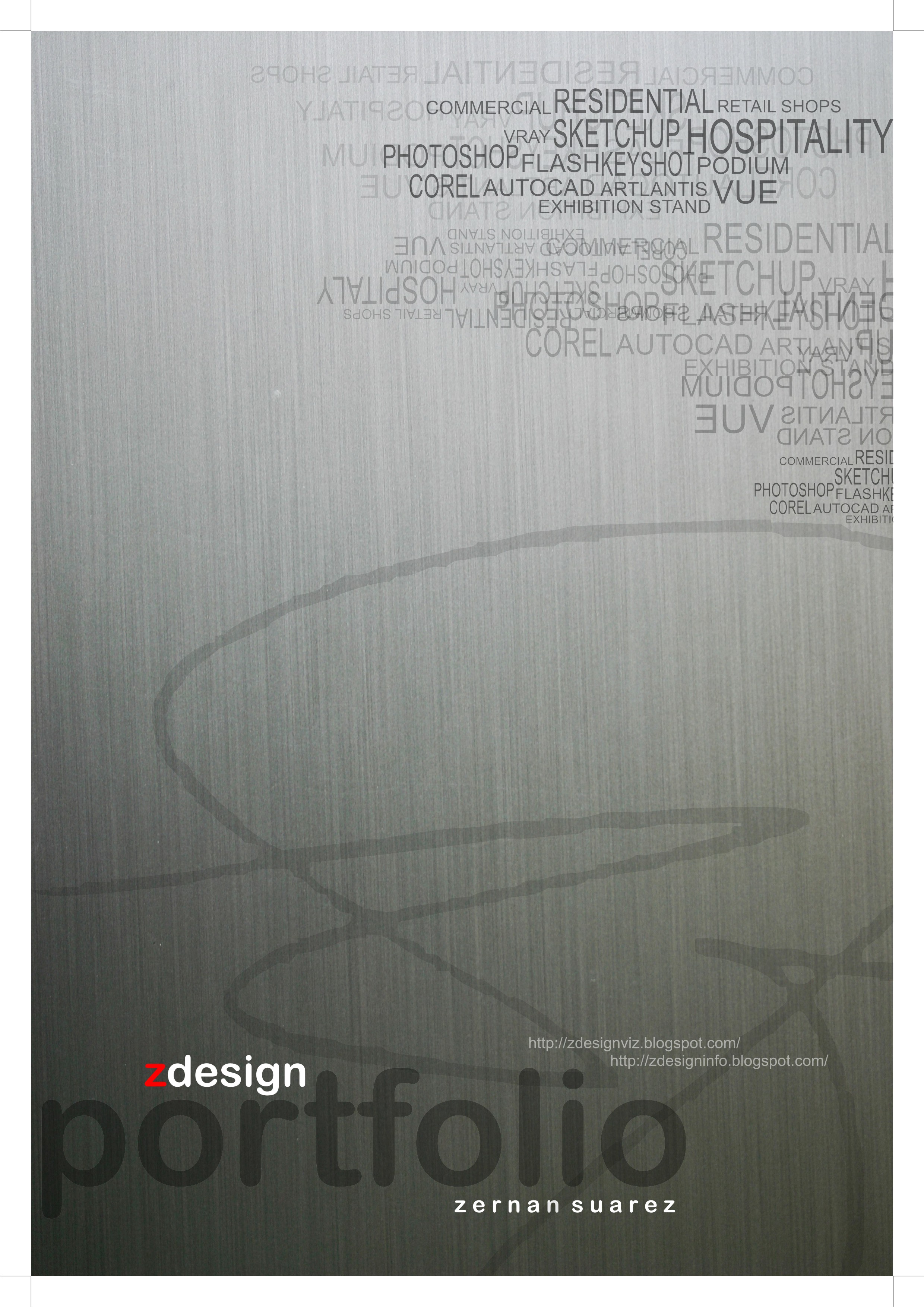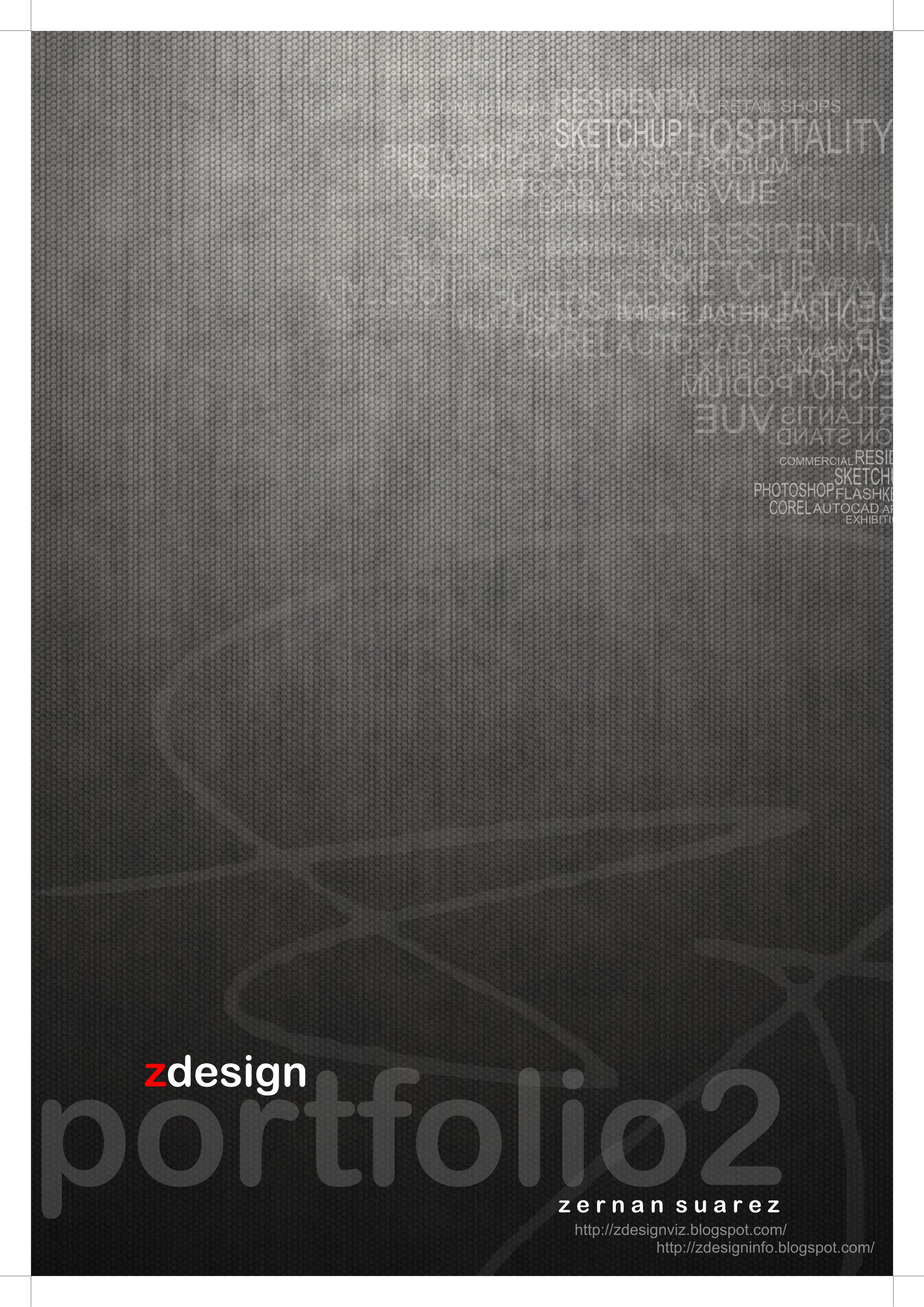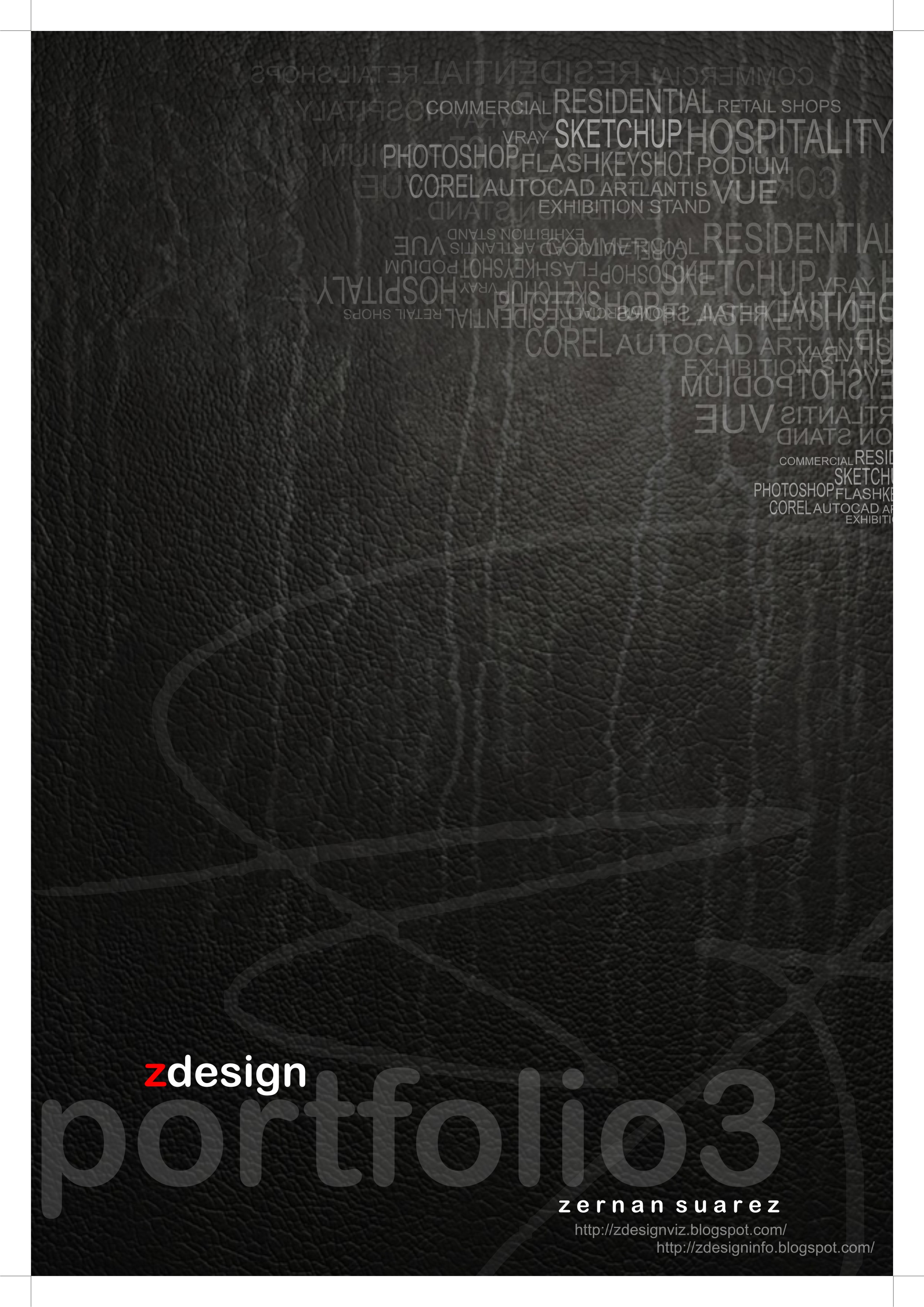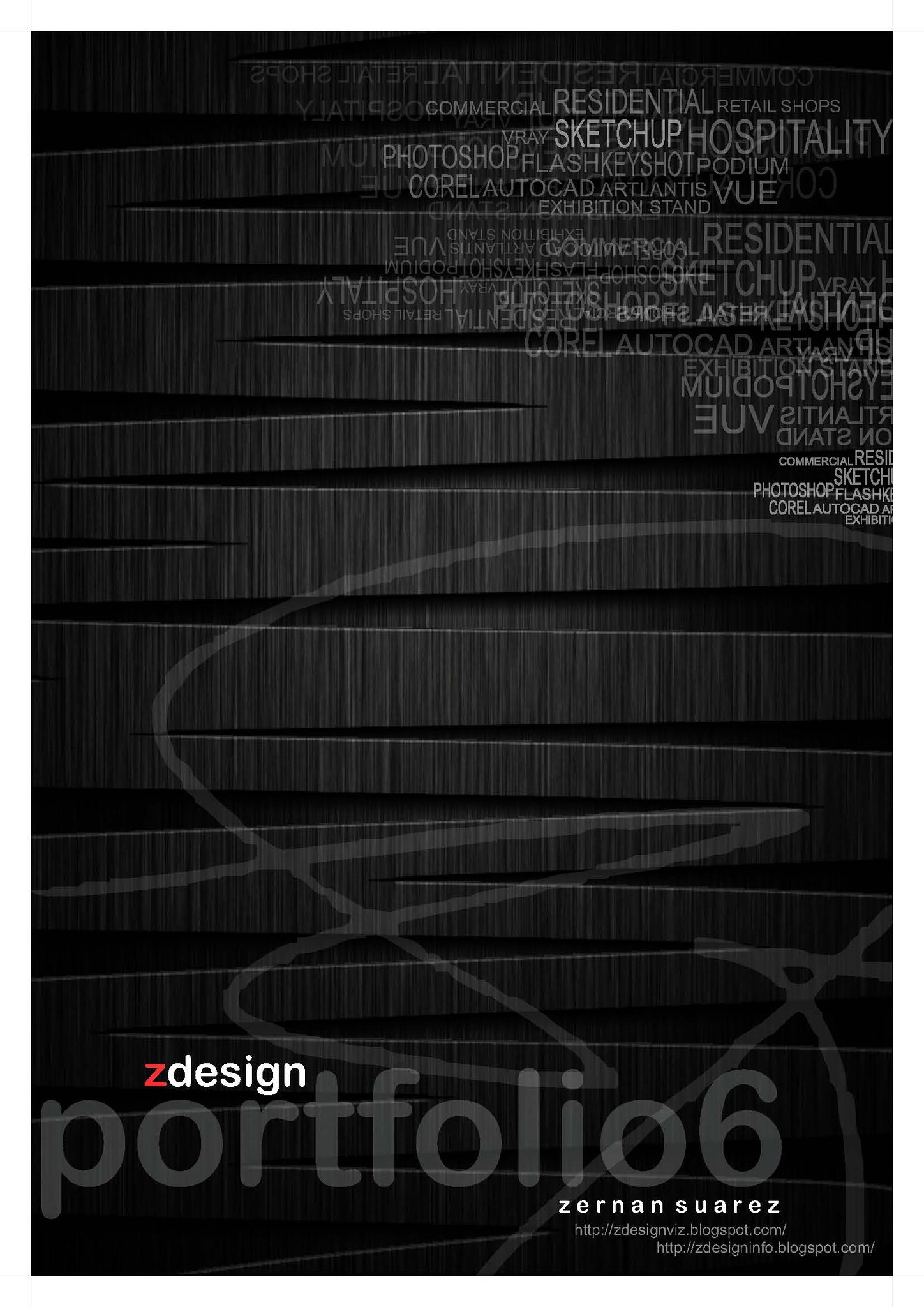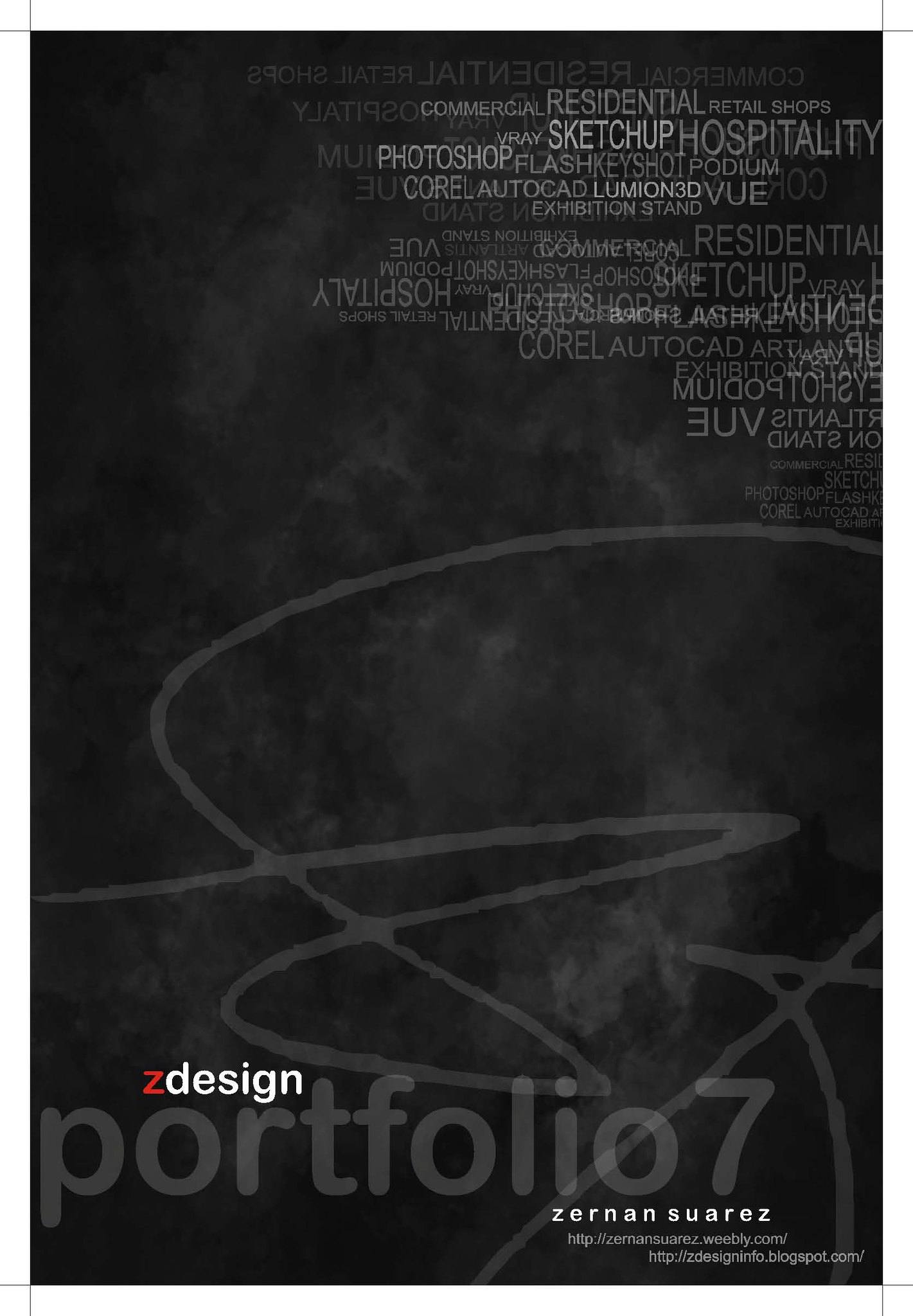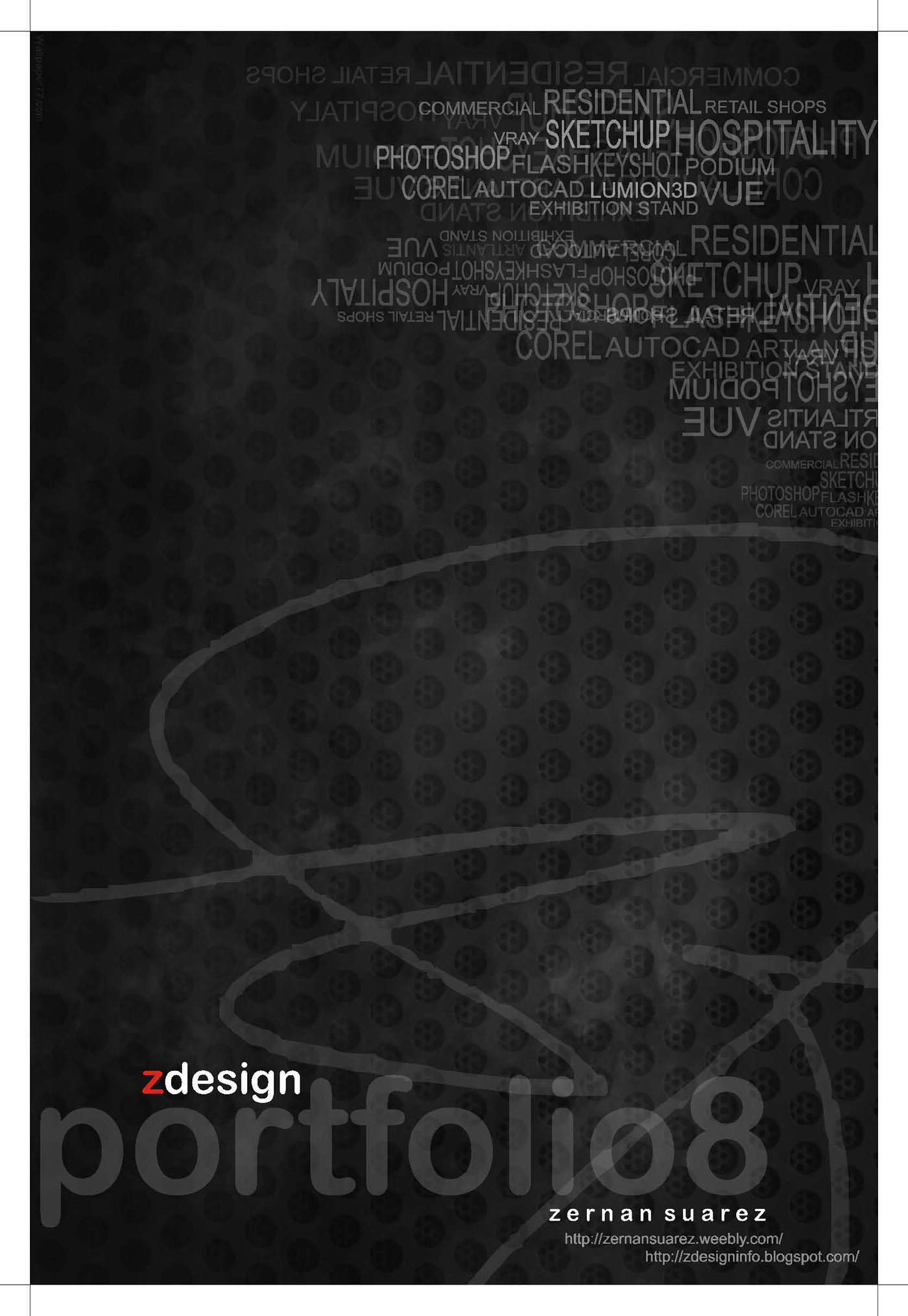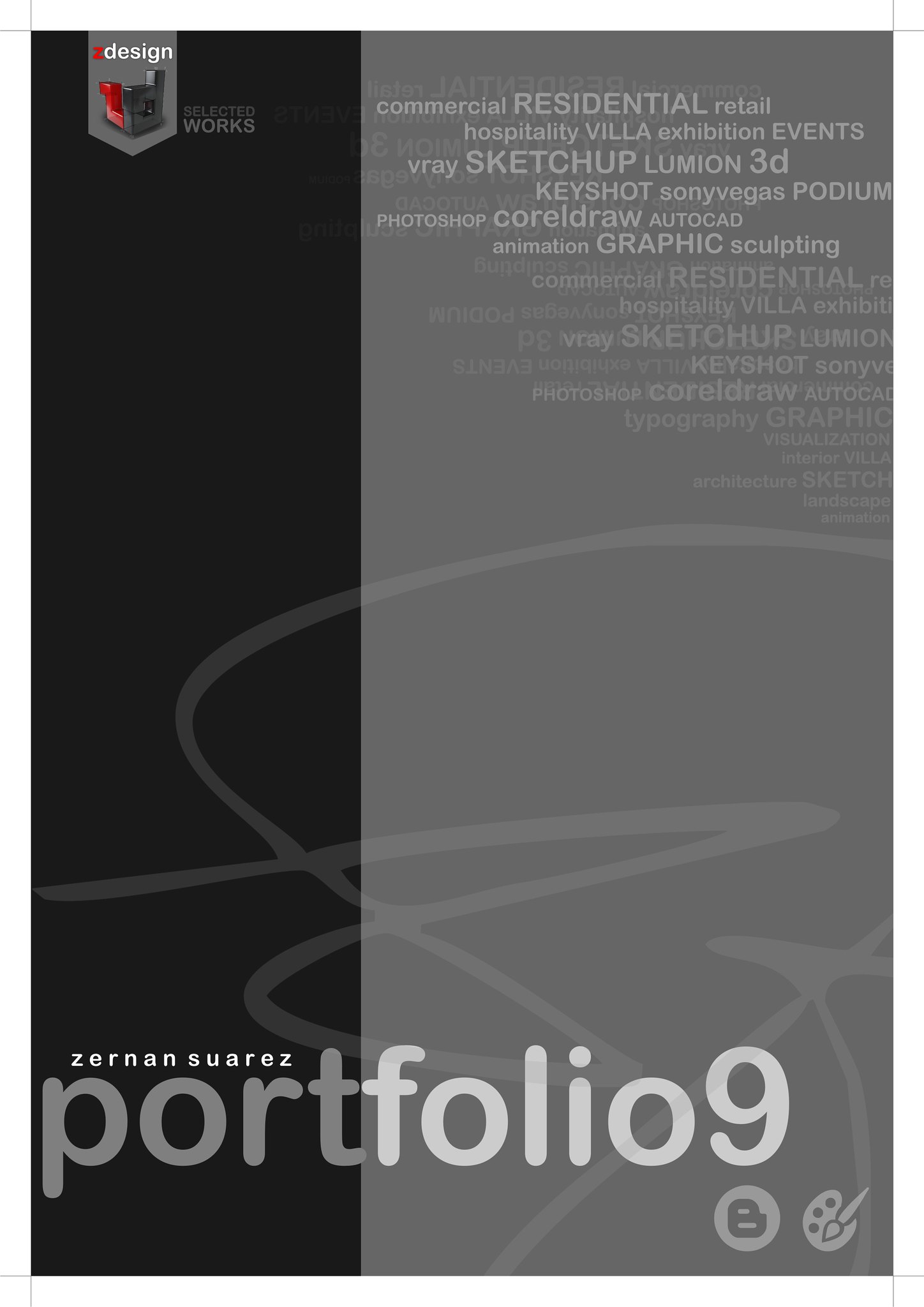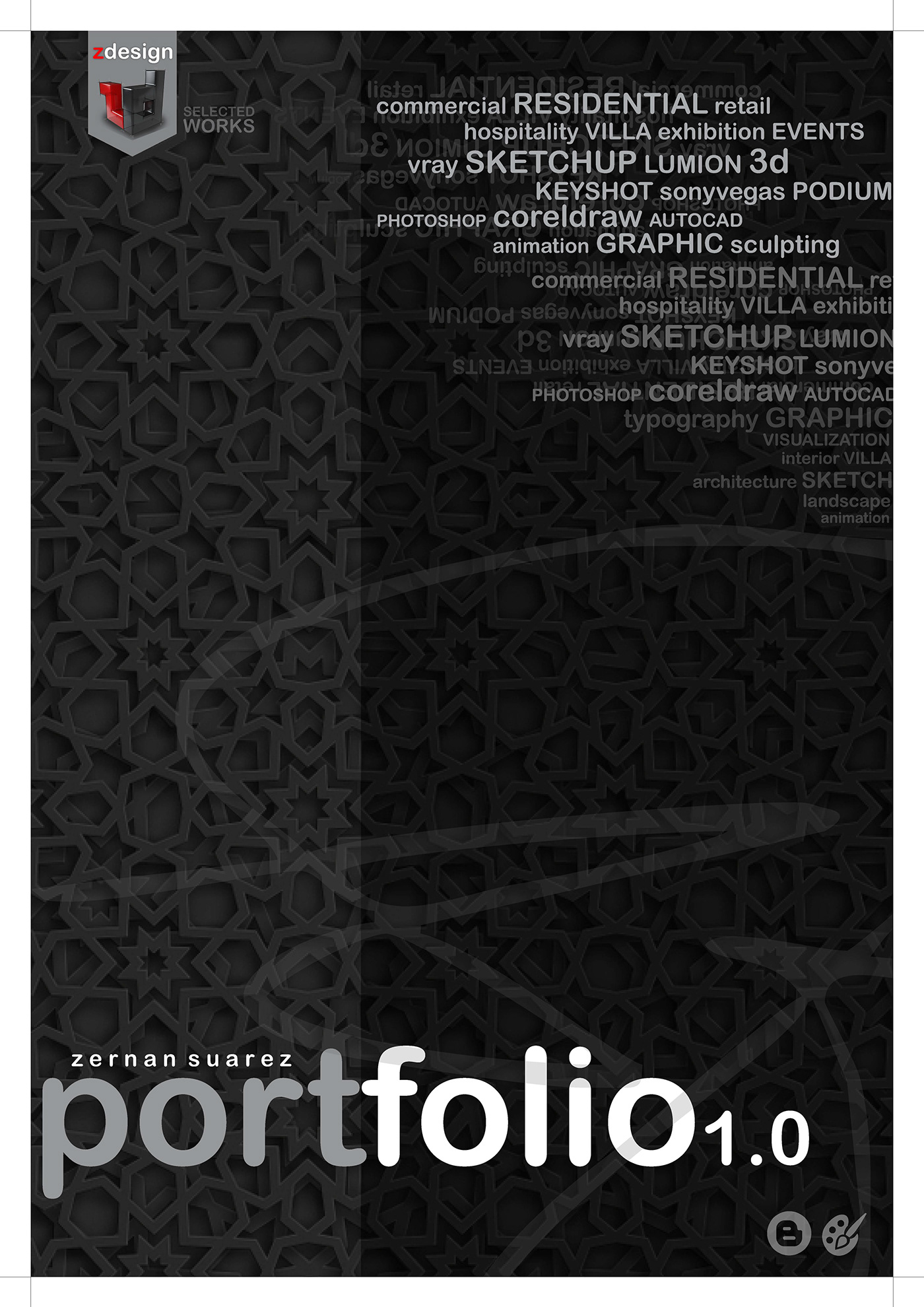s h o r t f o l i o . . .
Wednesday, December 28, 2011
Sunday, December 25, 2011
added new collection ...
Labels:
banner,
Collection,
concept,
graphics,
my gallery
Wednesday, December 21, 2011
Pimp my ride and scenario . . .
SVA December Challenge . . . RULES HERE
MERRY CHRISTMAS AND HAPPY NEW YEAR TO ALL OF US...
Labels:
Challeges,
exterior,
PAROL,
The Making,
tutorials
Monday, December 19, 2011
Sketchup ur space - December 2011 issue . . .
Labels:
featured,
The Making,
Tips and Tricks,
tutorials
Sunday, December 18, 2011
Understanding Color Mapping . . .
Linear multiply - this mode will simply multiply the final image colors based on their brightness area. Color components that are too bright (above 1.0 or 255) will be clipped. This can result in burnt out spots near bright light sources.
Exponential - this mode will saturate the colors based on their brightness. This can be useful to prevent burn-outs in very bright areas (for example around light sources etc). This mode will not clip bright colors, but will instead saturate them.
HSV exponential - this mode is very similar to the Exponential mode, but it will preserve the color hue and saturation, instead of washing out the color towards white.
Intensity exponential - this mode is similar to the Exponential one, but it will preserve the ratio of the RGB color components and will only affect the intensity of the colors.
Gamma correction - this mode applies a gamma curve to the colors. In this case, the Dark multiplier is a general multiplier for the colors before they are gamma-corrected. The Bright multiplier is the inverse of the gamma value (f.e. for gamma 2.2, the Bright multiplier must be 0.4545).
Intensity gamma - this mode applies a gamma curve to the intensity of the colors, instead of each channel (r/g/b) independently.
Reinhard - this mode is a blend between exponential-style color mapping and linear mapping. If the Burn value is 1.0, the result is linear color mapping and if the Burn value is 0.0, the result is exponential-style mapping.
Dark multiplier - this is the multiplier for dark colors.
Bright multiplier - this is the multiplier for bright colors.
Gamma - this parameter allows the user to control the gamma correction for the output image regardless of the color mapping mode. Note that the value here is the inverse of the one used for the Gamma correction color mapping type. For example, to correct the image for a 2.2-gamma display, you should set the Gamma parameter simply to 2.2.
Sub-pixel mapping - this option controls whether color mapping will be applied to the final image pixels, or to the individual sub-pixel samples. In older versions of V-Ray, this option was always assumed to be on, however its default value is now off as this produces more correct renderings, especially if you use the universal settings approach.
Clamp output - if this is on, colors will be clamped after color mapping. In some situations, this may be undesirable (for example, if you wish to antialias hdr parts of the image, too) - in that case, turn clamping off.
Clamp level - this option specifies the level at which color components will be clamped if the Clamp output option is on.
Affect background - if this is off, color mapping will not affect colors belonging to the background.
Don't affect colors (adaptation only) - when this parameter is on, the color mapping will not be applied to the final image, however V-Ray will proceed with all its calculations as though color mapping is applied (e.g. the noise levels will be corrected accordingly). This can be useful, for example, if you know that you will apply some color correction to the image later on, but wish to keep the rendering itself in linear space for compositing purposes. Note that the Clamp output option will have an effect regardless of the value of the Don't affect colors option.
Linear workflow - when this option is checked V-Ray will automatically apply the inverse of the Gamma correction that you have set in the Gamma field to all VRayMtl materials in your scene. Note that this option is intended to be used only for quickly converting old scenes which are not set up with proper linear workflow in mind. This option is not a replacement for proper linear workflow.
Exponential - this mode will saturate the colors based on their brightness. This can be useful to prevent burn-outs in very bright areas (for example around light sources etc). This mode will not clip bright colors, but will instead saturate them.
HSV exponential - this mode is very similar to the Exponential mode, but it will preserve the color hue and saturation, instead of washing out the color towards white.
Intensity exponential - this mode is similar to the Exponential one, but it will preserve the ratio of the RGB color components and will only affect the intensity of the colors.
Gamma correction - this mode applies a gamma curve to the colors. In this case, the Dark multiplier is a general multiplier for the colors before they are gamma-corrected. The Bright multiplier is the inverse of the gamma value (f.e. for gamma 2.2, the Bright multiplier must be 0.4545).
Intensity gamma - this mode applies a gamma curve to the intensity of the colors, instead of each channel (r/g/b) independently.
Reinhard - this mode is a blend between exponential-style color mapping and linear mapping. If the Burn value is 1.0, the result is linear color mapping and if the Burn value is 0.0, the result is exponential-style mapping.
Dark multiplier - this is the multiplier for dark colors.
Bright multiplier - this is the multiplier for bright colors.
Sub-pixel mapping - this option controls whether color mapping will be applied to the final image pixels, or to the individual sub-pixel samples. In older versions of V-Ray, this option was always assumed to be on, however its default value is now off as this produces more correct renderings, especially if you use the universal settings approach.
Clamp output - if this is on, colors will be clamped after color mapping. In some situations, this may be undesirable (for example, if you wish to antialias hdr parts of the image, too) - in that case, turn clamping off.
Clamp level - this option specifies the level at which color components will be clamped if the Clamp output option is on.
Affect background - if this is off, color mapping will not affect colors belonging to the background.
Don't affect colors (adaptation only) - when this parameter is on, the color mapping will not be applied to the final image, however V-Ray will proceed with all its calculations as though color mapping is applied (e.g. the noise levels will be corrected accordingly). This can be useful, for example, if you know that you will apply some color correction to the image later on, but wish to keep the rendering itself in linear space for compositing purposes. Note that the Clamp output option will have an effect regardless of the value of the Don't affect colors option.
Labels:
Color Mapping,
Reference,
Render,
Tips and Tricks,
tutorials
Friday, December 9, 2011
speed up your modeling work
Labels:
Sketchup,
speedup skp,
Tips and Tricks,
tutorials
Thursday, December 8, 2011
SVA December Challenge . . .
Challenge . . .RULES HERE
Join us in our 4th rendering Challenge... To join visit and join our Facebook Group here.
Tuesday, December 6, 2011
The making of Parol at Puto Bumbong . . . SVA Challenge Winner
The parol or lantern is one of the most iconic and beloved symbols of the holiday. The earliest parols were traditionally made from simple materials like bamboo sticks, Japanese rice paper (known as "papel de Hapon") or crepe paper, and a candle or coconut oil-lamp for illumination; although the present day parol can take many different shapes and forms. The most base form of the lantern is a 5-pointed star with two "tails" at the lower two tips. Other variations are 4, 8, 10 pointed stars with the rarer 6, 16 and so on pointed stars. The parol is also traditionally made of lacquered paper and bamboo, but others are made of cellophane, plastic, rope, capiz shell and a wide variety of materials. Making parols is a folk craft, and most Filipino kids have tried their hand at making a parol at one time or another, maybe as a school project or otherwise. The most basic parol can be easily constructed with just ten bamboo sticks, paper, and glue. These lanterns represent the Star of Bethlehem that guided the Magi, also known as the Three Wise Men or Three Kings (Tatlong Hari in Tagalog).
Puto Bumbong, Traditionally made from a special variety of heirloom sticky or glutinous rice called Pirurutong which has a distinctly purple color, soaked in salted water and dried overnight and then poured into bumbong or bamboo tubes and then steamed until done or steam rises out of the bamboo tubes. It is served topped with butter or margarine and shredded coconut mixed with sugar.
Puto bumbong is the most sought after delicacies at Christmas time. During the simbang gabi or the Christmas Eve mass, people would line up to their favorite stalls outside the church just to have a taste of this favorite Pinoy delicacies.
PDF : HERE
CHECK FLASH ANIMATION : HERE
SKETCHUP MODEL : VERSION - 6 | VERSION - 8
...advance MERRY CHRISTMAS TO ALL !!!
f
Puto Bumbong, Traditionally made from a special variety of heirloom sticky or glutinous rice called Pirurutong which has a distinctly purple color, soaked in salted water and dried overnight and then poured into bumbong or bamboo tubes and then steamed until done or steam rises out of the bamboo tubes. It is served topped with butter or margarine and shredded coconut mixed with sugar.
Puto bumbong is the most sought after delicacies at Christmas time. During the simbang gabi or the Christmas Eve mass, people would line up to their favorite stalls outside the church just to have a taste of this favorite Pinoy delicacies.
PDF : HERE
CHECK FLASH ANIMATION : HERE
SKETCHUP MODEL : VERSION - 6 | VERSION - 8
...advance MERRY CHRISTMAS TO ALL !!!
Labels:
ANIMATION,
Challeges,
Christmas,
FLASH,
PAROL,
The Making,
Tips and Tricks,
tutorials
Monday, December 5, 2011
SVA November Challenge Winner . . .
For more info - CHECK HERE
Congratulations to all SVA November Challenge Winners. This is a pure SketchUp Modeling Challenge.
Sunday, December 4, 2011
Parol "Lantern" - (WIP) Christmas in the Philippines...3 (final model)
The parol or lantern is one of the most iconic and beloved symbols of the holiday. The earliest parols were traditionally made from simple materials like bamboo sticks, Japanese rice paper (known as "papel de Hapon") or crepe paper, and a candle or coconut oil-lamp for illumination; although the present day parol can take many different shapes and forms. The most base form of the lantern is a 5-pointed star with two "tails" at the lower two tips. Other variations are 4, 8, 10 pointed stars with the rarer 6, 16 and so on pointed stars. The parol is also traditionally made of lacquered paper and bamboo, but others are made of cellophane, plastic, rope, capiz shell and a wide variety of materials. Making parols is a folk craft, and most Filipino kids have tried their hand at making a parol at one time or another, maybe as a school project or otherwise. The most basic parol can be easily constructed with just ten bamboo sticks, paper, and glue. These lanterns represent the Star of Bethlehem that guided the Magi, also known as the Three Wise Men or Three Kings (Tatlong Hari in Tagalog).
Puto Bumbong, Traditionally made from a special variety of heirloom sticky or glutinous rice called Pirurutong which has a distinctly purple color, soaked in salted water and dried overnight and then poured into bumbong or bamboo tubes and then steamed until done or steam rises out of the bamboo tubes. It is served topped with butter or margarine and shredded coconut mixed with sugar.
Puto bumbong is the most sought after delicacies at Christmas time. During the simbang gabi or the Christmas Eve mass, people would line up to their favorite stalls outside the church just to have a taste of this favorite Pinoy delicacies.
WIP 3d model images: cgpinoy
...advance MERRY CHRISTMAS TO ALL !!!
SKETCHUP MODEL : VERSION - 6 | VERSION - 8
Puto Bumbong, Traditionally made from a special variety of heirloom sticky or glutinous rice called Pirurutong which has a distinctly purple color, soaked in salted water and dried overnight and then poured into bumbong or bamboo tubes and then steamed until done or steam rises out of the bamboo tubes. It is served topped with butter or margarine and shredded coconut mixed with sugar.
Puto bumbong is the most sought after delicacies at Christmas time. During the simbang gabi or the Christmas Eve mass, people would line up to their favorite stalls outside the church just to have a taste of this favorite Pinoy delicacies.
WIP 3d model images: cgpinoy
...advance MERRY CHRISTMAS TO ALL !!!
SKETCHUP MODEL : VERSION - 6 | VERSION - 8
Saturday, December 3, 2011
Subscribe to:
Posts (Atom)


